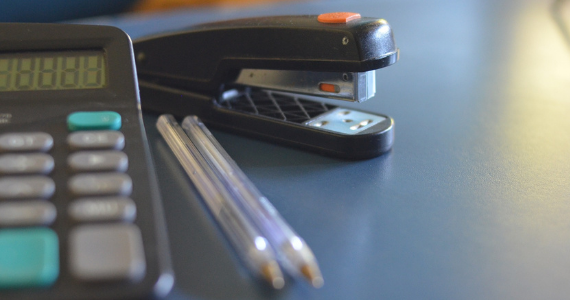One of the best tax breaks for many businesses is the instant asset write-off, which offers a means to acquire capital assets and obtain an immediate tax deduction.

As part of the Federal Government’s Coronavirus Stimulus Package, the Instant Asset Write-Off threshold increased from $30,000 to $150,000 (net of GST) per asset acquired.
This change applies to businesses with an aggregated annual turnover of less than $500 million, where those assets are first used or installed ready for use between 12 March 2020 and 30 June 2021, and purchased by 31 December 2020.
Temporary Full Expensing
The Instant Asset Write-Off has been extended with a measure dubbed Temporary Full Expensing, to cover the period from 7.30pm AEDT on 6 October 2020 until 30 June 2023 (including the extension announced in the 2021-22 Federal Budget).
Temporary Full Expensing now allows an immediate deduction for purchases of new eligible depreciating assets (for businesses with an aggregated turnover under $5 billion), eligible second-hand assets (for businesses with aggregated turnover under $50 million), and the balance of a small business pool at the end of each income year in the period (for businesses with an aggregated turnover under $10 million).
You can find all the details relating to recent changes to the Instant Asset Write-Off on the ATO website.
Examples of tax-deductible items
Some of the items that you could look at purchasing before 30 June 2021 include:
-
Cash registers and other POS devices
-
Cars, vans and utes
-
Fittings and fixtures
-
Plant and machinery
-
Computers and laptops
-
Security systems
Key tips for making the most of the Instant Asset Write-Off
To ensure compliance with the tax rules, here are nine key tips:
-
You have to be in business to claim the Instant Asset Write-Off – having an ABN is not enough
-
Both new and second-hand assets qualify
-
This tax break is not a cash hand-out, but a deduction that reduces your taxable profit. If you operate as a company and spend, say, $40,000 on a capital purchase (net of GST), then assuming a tax rate of 26%, the company will receive a 26% deduction, which equates to a $10,400 reduction in tax. This means that the company will still have a net cash outlay of $29,600 on this purchase
-
The immediate deduction limit is worked out on a GST-exclusive basis. This means that if your business is registered for GST and claims an input tax credit on the purchase, the tax deduction is worked out net of GST
-
Your business may purchase and claim a deduction for each asset that costs less than the relevant threshold. For example, on 16 April 2021 your business purchased a piece of machinery costing $50,000 (net of GST) and then prior to 30 June 2021 purchases a new car costing $40,000 (net of GST). The business can claim both of these as each of the assets as an immediate tax deduction in the 2020/21 year as both assets cost under the relevant threshold
-
The asset must be used, or installed ready for use by the end of the financial year. This is particularly important if the business purchases the asset just before the end of 30 June. For example, if the asset is purchased say on 29 June 2021, but not available for use in the business until 7 July 2021, then the business loses the entitlement to claim an immediate tax deduction for the asset in the 2020/21 year. Instead the business can claim ordinary rates of depreciation on the asset in the 2021/22 year and following years, which may include the 50% accelerated depreciation rate announced as part of the Government’s COVID-19 stimulus package
-
Don’t forget to pro-rate the deduction for private use – to claim the full deduction, the asset has to be used solely for business purposes. If you operate as a sole trader or in a partnership and there has been some personal use of the asset, the deduction needs to be pro-rated to reflect this
-
The deduction is not pro-rated where you operate as a company or a family trust, but fringe benefits tax (FBT) may apply to the private use of the asset by employees (FBT on company cars is a common example)
-
The immediate deduction for a car cannot exceed the cost limit of $59,136 for the 2020/21 year
For advice on your specific situation, call us today on Phone: 61 (08) 9381 2944.
Source: MYOB May 2021
Reproduced with the permission of MYOB. This article by Joe Kaleb was originally published at https://www.myob.com/au/blog/claiming-instant-asset-write-off-eofy-2021/
Important:
This provides general information and hasn’t taken your circumstances into account. It’s important to consider your particular circumstances before deciding what’s right for you. Although the information is from sources considered reliable, we do not guarantee that it is accurate or complete. You should not rely upon it and should seek qualified advice before making any investment decision. Except where liability under any statute cannot be excluded, we do not accept any liability (whether under contract, tort or otherwise) for any resulting loss or damage of the reader or any other person.
Any information provided by the author detailed above is separate and external to our business and our Licensee. Neither our business nor our Licensee takes any responsibility for any action or any service provided by the author. Any links have been provided with permission for information purposes only and will take you to external websites, which are not connected to our company in any way. Note: Our company does not endorse and is not responsible for the accuracy of the contents/information contained within the linked site(s) accessible from this page.


